With monogram (illegible) and dated (right ear of the saint).
Oil on oak panel depicting an elderly and thin male figure, dressed in a cloth up to the waist, sitting on a stone bench on which a skull and a roll of parchment appear, as well as other elements. To the right of the composition, we can see a cloth in the background, a crucified Christ on a book, a red cap on a wall, resting on a closed book and a mechanical pencil; at the bottom, a lion.
Eusebius Hieronymus (c. 340–420), better known as Saint Jerome or Saint Jerome of Stridon, was a Christian saint and Father of the Church, who translated the Bible from Hebrew and Greek into Latin at the request of Pope Damasus I (called The Vulgate, declared in 1546, at the Council of Trent, as the authentic edition for the Latin Catholic Church). He is usually depicted as in the present panel because of his desire, during his life, to live in asceticism and do penance for his sins. The lion is the beast he saved while meditating on the banks of the Jordan and which never left the saint again.
In the area of the saint's right ear there is an inscription that appears to be a monogram with a date (perhaps 1576). This panel is related to the circle of Willem Key (Breda, 1516-Antwerp, 1568), a Flemish Renaissance portrait painter who, like his brother Wouters, trained in Antwerp (he with Pieter Coecke). Registered in 1549 as a citizen of Antwerp, he died suddenly in 1568 after having achieved wealth and a solid social position thanks to his portraits and historical paintings, painted with a learned hand according to Lamposonio's verses on his portrait. His religious paintings were also highly regarded. His work is preserved by important institutions such as the Dordrecht Museum, the collection of the House of Alba, the Rijksmuseum in Amsterdam, etc. -
Dimensions: 125x5x120 cm. Size: 125x5x120 cm / Int 104x99 cm




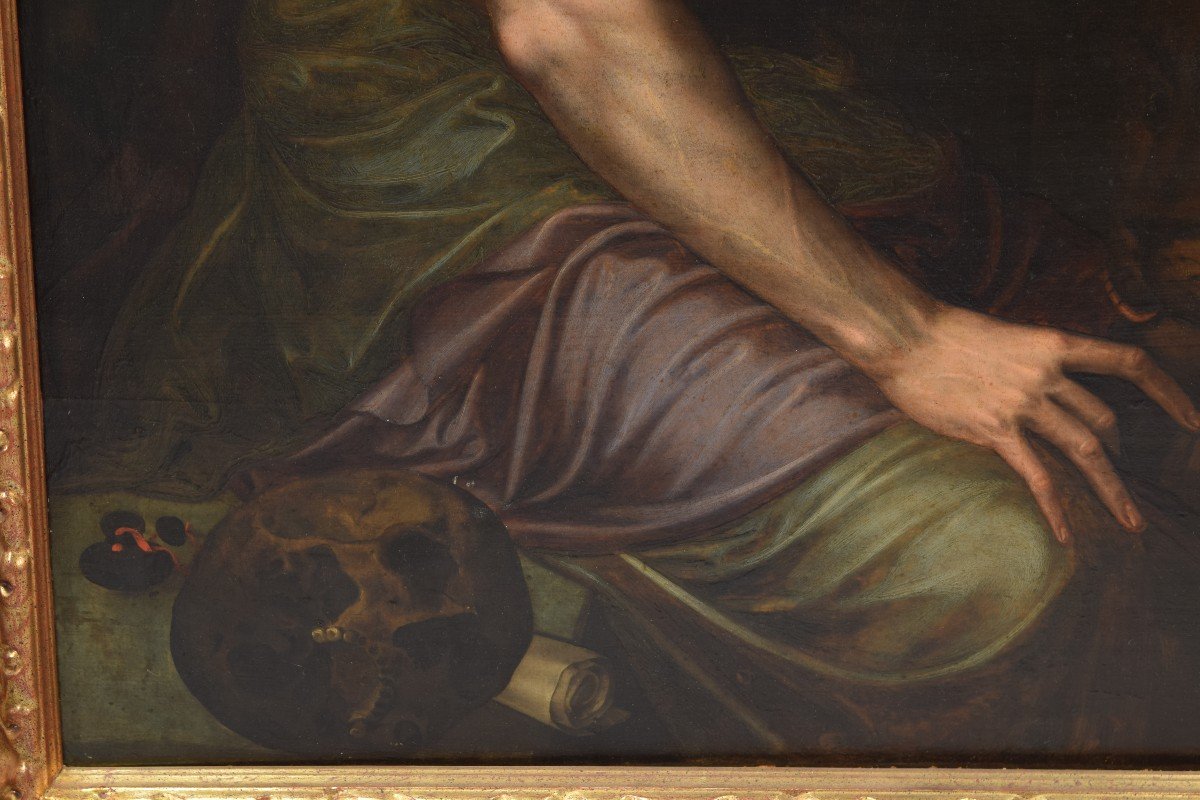


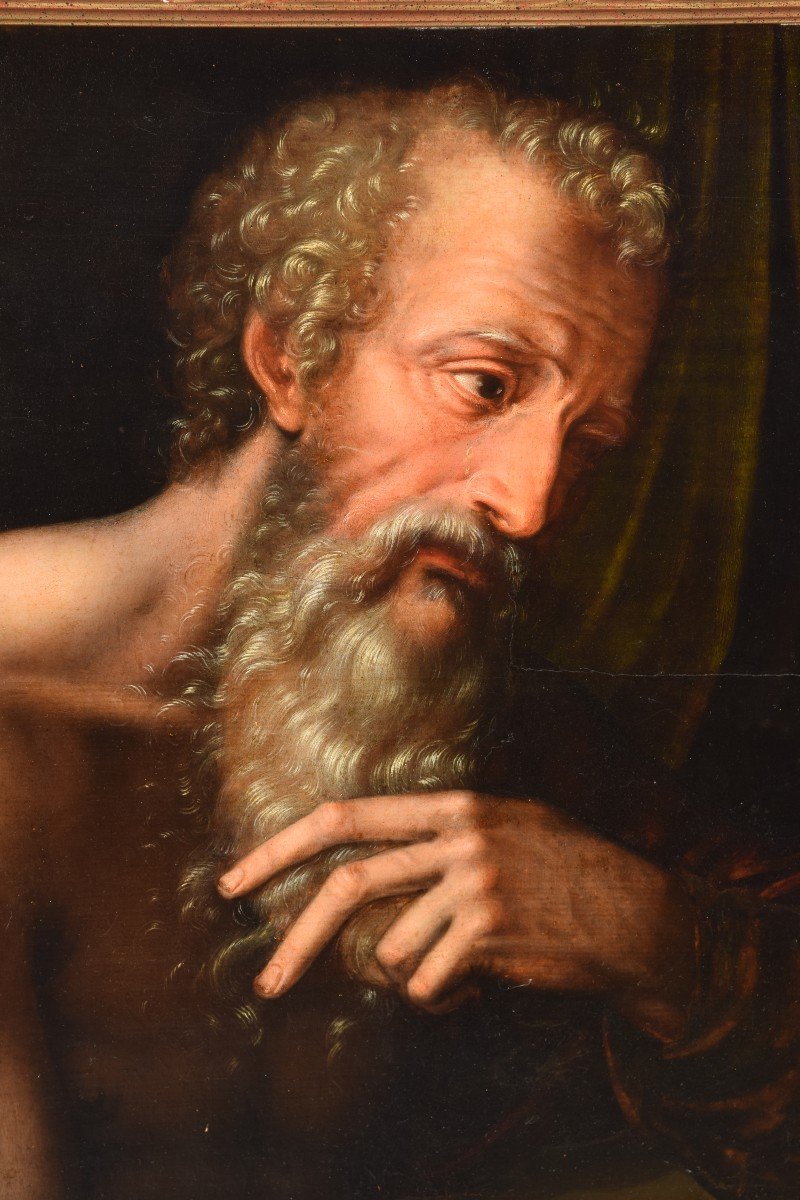
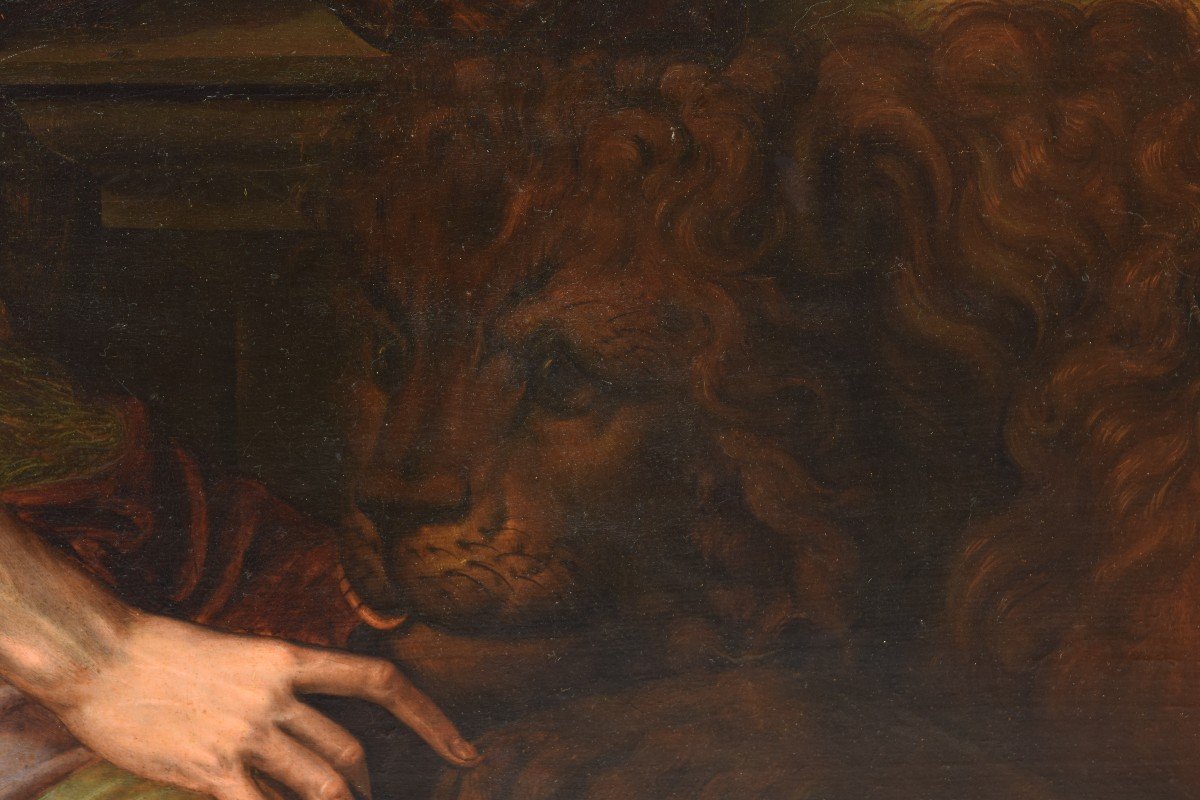

































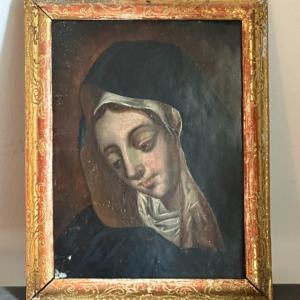


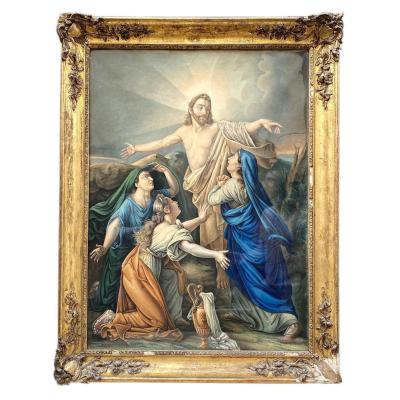




 Le Magazine de PROANTIC
Le Magazine de PROANTIC TRÉSORS Magazine
TRÉSORS Magazine Rivista Artiquariato
Rivista Artiquariato